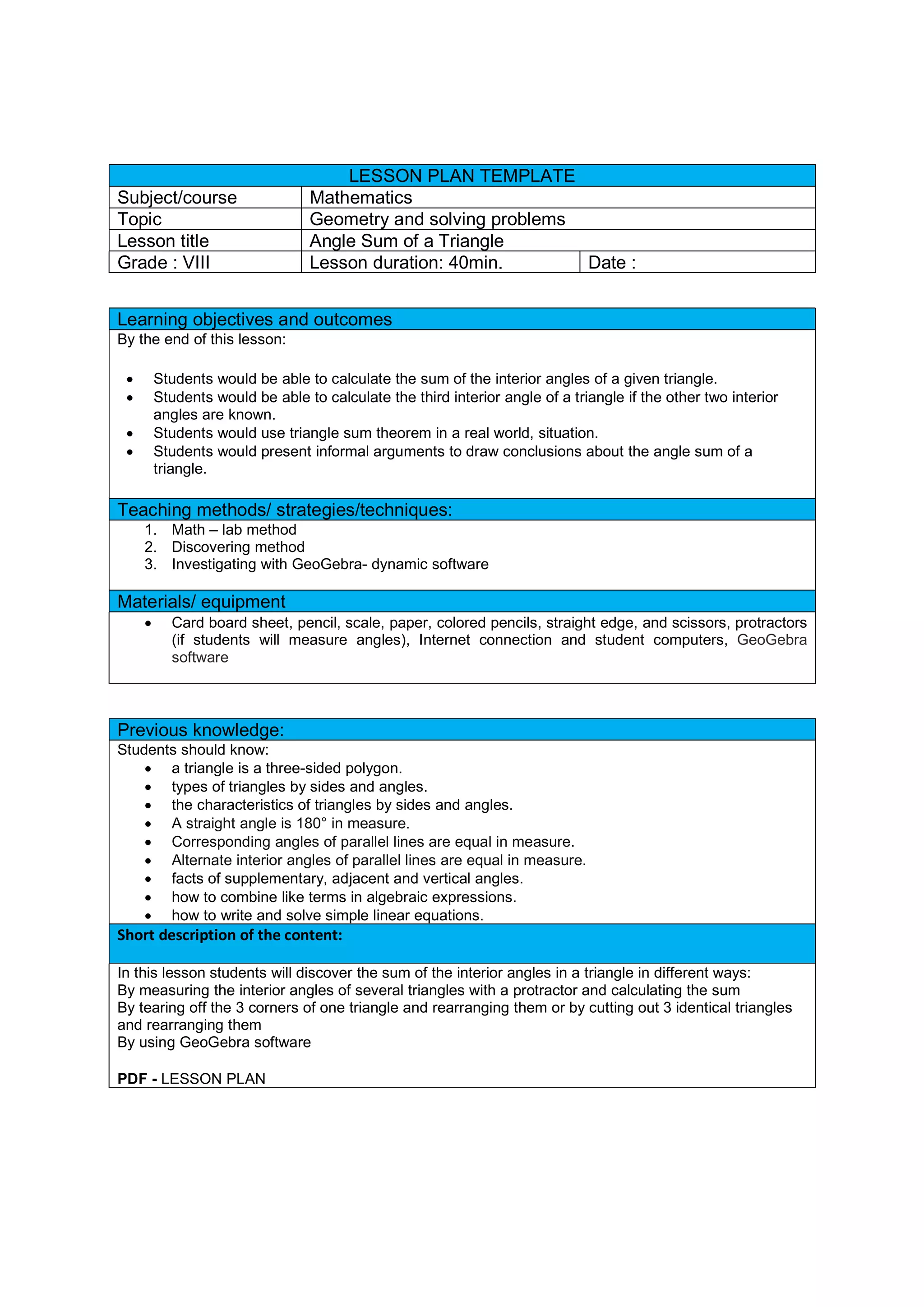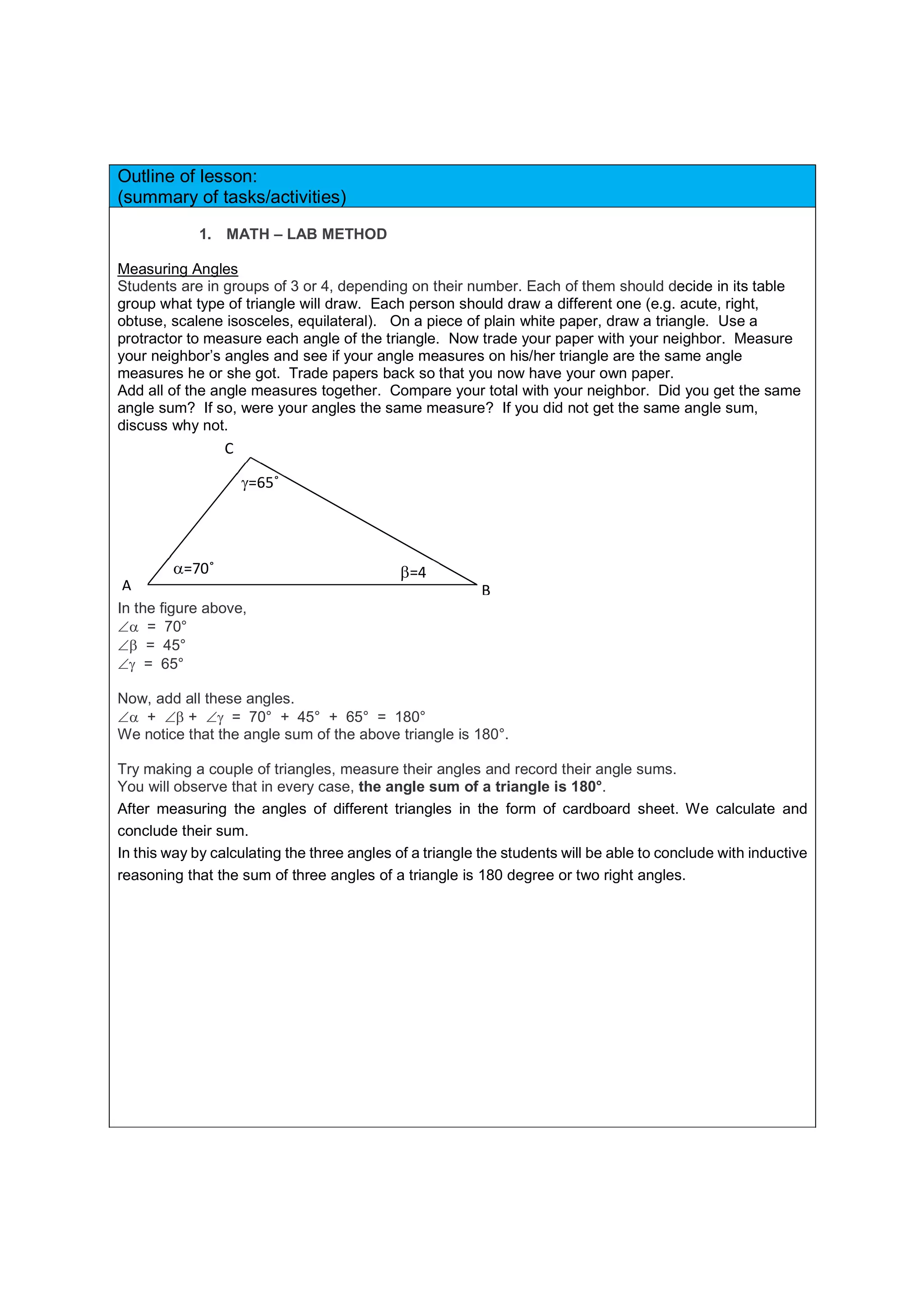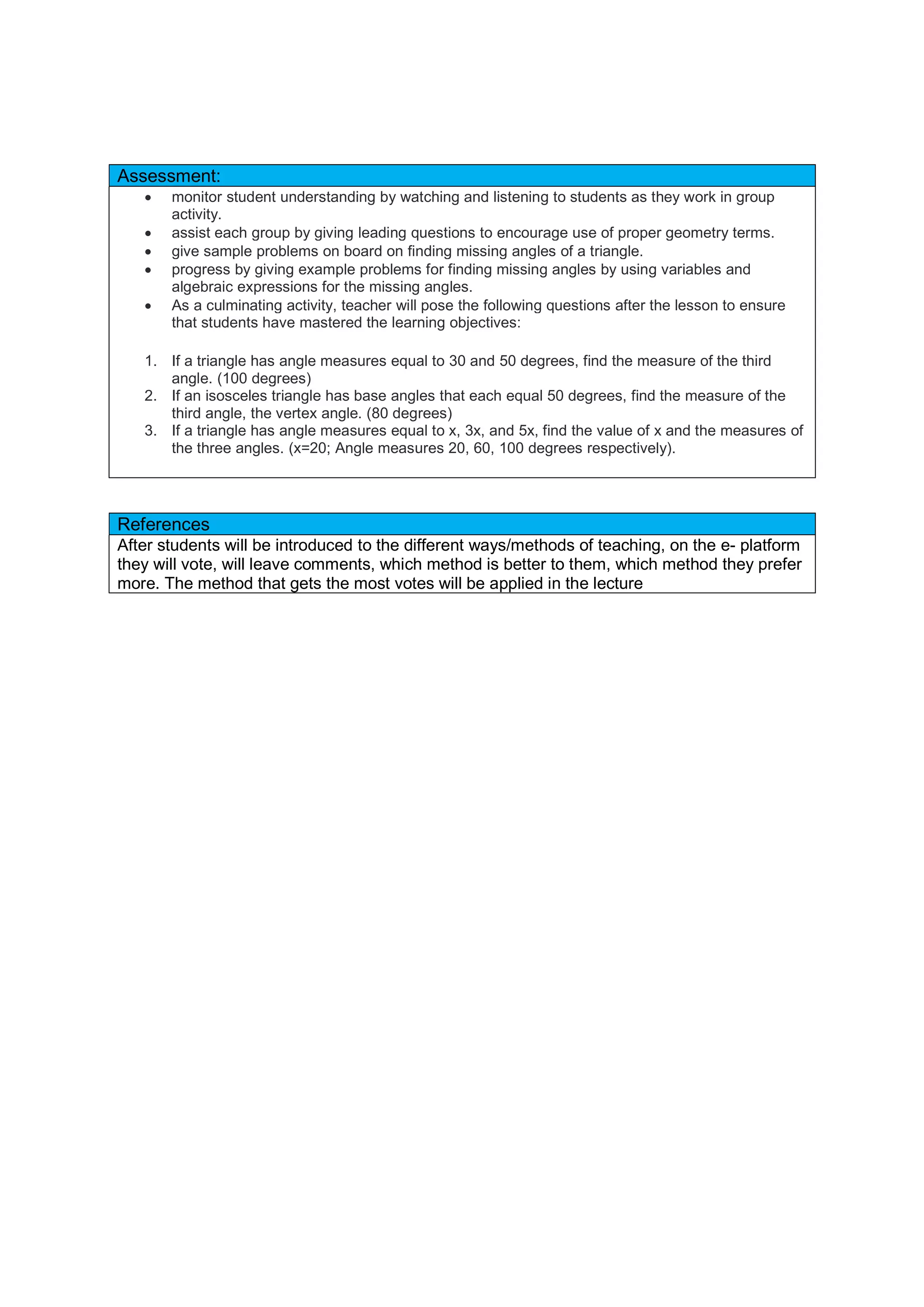This lesson plan introduces students to the angle sum of a triangle through three methods: measuring angles with protractors, cutting out triangles and rearranging the corners, and using GeoGebra software. Students will work in groups to measure angles, cut out triangles, and explore interactive worksheets. They will discover that regardless of the type of triangle, the interior angles always sum to 180 degrees. The lesson concludes with an assessment involving calculating missing angles in various triangles.




